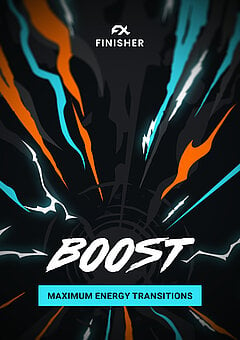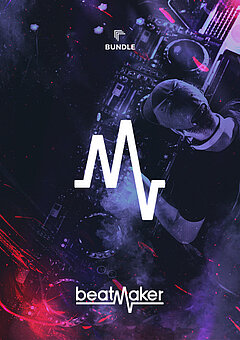How to Construct Hard-Hitting EDM Drops
Simplify the principles of sound design, buildups, and getting the perfect bass / percussion balance in your EDM drops.
AUGUST 23RD, 2020
There are countless YouTube videos going over the fine details of building effective drops in every possible genre, diving into synth patches, arrangements, and an open view into the project files of producers. It’s difficult to sort useful information from waste--so we created some guidelines that will help you get started.
- What is a drop?
- How to create a buildup that makes the drop hit even harder
- Bass design for drops
- Balance
- The best drum machine for EDM
What is a drop?
A drop typically indicates a sharp increase in intensity, often one where any semblance of melody completely disappears, in favor of focusing on a complex bass sound (potentially with large chord stacks). A lot of producers spend a lot of their production time just getting the bass design right, a process we’ll describe in more detail below.
EDM has a unique advantage over other genres: diving into nuanced sound design allows you to extend your song without rehashing previously used material, and a good drop will make the next verse or interlude even more enjoyable now that you’ve given the listener something different to latch onto.
Functionally, drops don’t seem to do much--they’re an extra session thrown into the regular song flow. Sometimes they take the place of the chorus, but they can also be extra sections added into the structure. But as you dive more seriously into EDM, you’ll start to realize…
A lot of songs are completely built around the drop. And leads us to the importance of the buildup.
How to create a buildup that makes the drop hit even harder
Producers tend to construct their buildups with the notion that they’re increasing the track’s energy to the point of bursting so they can hit the drop at peak intensity. And to an extent, that’s true. But there’s a bigger, equally important role that every drop must fulfill, which many producers completely miss for years without even realizing it...
And that is contrast.
If your drop contains a lot of bass (which it probably should), you should use as little bass as possible in your buildup. If your drop is extremely active with many competing elements, your buildup should have very little going on at once to maximize its impact (if you’re a bit more experienced, you can also play with having a very busy buildup into a minimalist drop--but you should already be comfortable with creating both buildups and drops before attempting this).
Bass design for drops
This process is going to vary quite a bit between subgenres--for example, dubstep bass design is very different from that of progressive house. As a result, this list is incomplete and (by necessity) general, but it should still start giving you ideas about how to make EDM drops and attack your bass design head-on:
- Use the tools of the pros. Serum and Massive are excellent softsynths for designing EDM basses. Start off with either of them, and you’ll have an abundance of presets and tutorials at your disposal.
- When in doubt, layer noise samples into your bass. When you run your synth patch into distortion, compression, and other effects, the result will be grittier and more complex. It may not fit in the style you’re writing for, but the result will never cease to surprise you.
- Be extremely liberal with filters (low pass, high pass, band pass, band reject, even allpass), and give them lots of automation. Changing frequency, resonance, and other settings in realtime makes your bass sound more “alive.”
Keep your bass nimble and creative--it can be melodic, but it doesn’t have to be. Dubstep, for example, tends to direct a singular focus onto sound design. Big room house, by contrast, typically skews melodic. Cultivate a list of reference tracks long before you need them--that way, when you’re struggling for ideas, you know exactly what’s been done already, what you want to emulate, or even which overused sounds to eliminate so you can find new ideas that haven’t been attempted before.
Balance
Mixing drops takes a different kind of finesse than other sections, and your priorities will shift drastically from the verse and chorus.
Your drums must be clear, but not necessarily louder. Consider using heavy sidechain compression (a staple of EDM) to carve out more space in the mix for your kick and snare.
Consider pushing your chord and harmony instruments into the background--they should still be audible, but they might not need to be as prominent in the drop.
If you have a bass-focused drop (most drops are), it should be front and center in your mix. This is where modulating the parameters on your bass becomes critical--the focus of your mix always needs to be dynamic, or the track will rapidly descend into the boredom zone!
The best drum machine for EDM
UJAM just released its new EDM beat maker, HYPE, a highly flexible EDM design tool and progressive house VST. Every sample is finely processed for maximum impact, giving your kick and snare the power they need to create the strongest drop possible.
But of course, it’s not just about the drop--it’s about the subtle components that make up the buildup and offer a powerful contrast with the drop, making it sound even bigger. You might be familiar with the common trope of creating a slow high pass filter sweep from low to high over 4 to 8 measures, immediately before a drop. It’s true that this is an excellent way to create contrast and build intensity...but it’s all too easy to either make it sound “fake” or spend hours getting the exact modulation you need to fully sell listeners on the effect.
So UJAM gave HYPE a special control called Riser to cut the complexity down to size without cheapening this essential effect. As you turn up the control, a high pass filter gently removes the bottom end of the drums while simultaneously adding a light delay and large reverb. By slowly turning up this one knob, you’re able to seamlessly give your beat the effect of being washed out in a huge room--and when the drop hits, turning the Riser knob back down will reset the kit and allow you to deliver an intense drop. Try testing this on the Reload preset; because of the acoustic feel of the toms, the effect will be even more pronounced and make the drums sound like they’re being liquified in a physical space.
Given the abundance of opportunities for hard-hitting EDM and progressive house beats, HYPE is the best tool available to cut down the time you spend guessing what to add. Everything’s right in front of you, and you can create a full beat in moments.
Stay up to date
Sign up and we’ll send you an e-mail with product news and helpful stuff every now and then. You may unsubscribe at any time.
Defy Limits
We develop software solutions that enable people to create, consume and interact with music.



